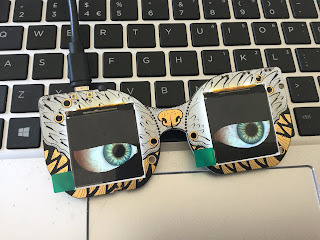Sphero have a track record of making well sort of fast spherical robots (along with a few Star Wars ones) in a recent kickstarter campaign they have a released a tracked robot https://www.kickstarter.com/projects/sphero/sphero-rvr-the-go-anywhere-do-anything-programmabl/description - RVR and it is still fast and fun.
It does seem to be a step up, they are allowing more customisation with a expansion port and on-board power, aimed at connecting other pieces of hardware, for example, Microbit and Raspberry Pis.Even without these it is not short of sensors and lights
The simplest way to program it is still through the Sphero Edu App and its block programming providing a quick way to get going.
This feels (to me) like a move towards the more 'traditional' robot hobbyists market - and that is fine. It comes almost completely built, so it is soon ready to go out of the box which is nice. I am interested to see what resources will be provided by Sphero through their Sphero Developer Site (https://sdk.sphero.com/), there are already some cool looking sample projects on the site https://sdk.sphero.com/samples/. So in all, I think well worth a look.
All opinions in this blog are the Author's and should not in any way be seen as reflecting the views of any organisation the Author has any association with. Twitter @scottturneruon



































